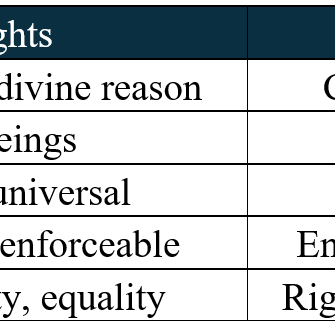
Unique And Eye-Opening Ways To Distinguish Natural And Legal Rights
Discover unique and eye-opening ways to distinguish natural and legal rights through real-life examples, simplified legal insight, and practical comparisons.
CONSTITUTIONAL LAW & LEGAL THEORY
Vipin Sharma
6/1/20253 min read



What gives you the right to speak freely? To own property? To live without fear? These may seem like simple questions, but the answer depends on whether the right you are referring to is a natural right or a legal right.
Though both types of rights are deeply connected, they have different origins, implications, and limitations. Understanding this difference is essential for law students, citizens, and professionals alike.
This guide explains the full distinction with definitions, examples, comparisons, and answers to common questions.
What Are Natural Rights?
Natural rights are those rights that every person is believed to have by virtue of being human. These rights do not depend on any government, law, or social structure. They are considered universal, permanent, and based on principles of justice or morality.
Real-World Example:
In 18th-century America, even though slavery was legal, abolitionists argued that enslaved individuals had a natural right to freedom. Their position was that no human law could morally justify slavery because the right to liberty is not granted by governmentit exists because of our shared humanity.
Another example is the right to life. Even if a totalitarian regime executes political prisoners under its legal system, the international community still considers it a violation of human rights. This is because the right to life is viewed as a natural right, not something a state can give or take arbitrarily.
Key Features:-
Exist from birth
Apply to all people regardless of country or citizenship
Based on morality, nature, or divine law
Cannot be surrendered or taken away legitimately
Examples:-
Right to life
Right to liberty
Right to equality
Right to dignity and conscience
What Are Legal Rights?
Legal rights are rights that are created and protected by a country’s legal system. They do not exist until they are written into laws or constitutions, and they only apply within the jurisdiction that recognizes them.
Real-World Example:
In India, the right to vote is a legal right. It is granted by law to Indian citizens who are 18 years or older. A foreigner living in India does not have this right. Also, if a citizen violates certain laws, they can temporarily lose this right through legal disqualification.
Another example is the Right to Education, which became a legal right in India only in 2002 through the 86th Amendment. Before that, it was not enforceable in court.
Key Features:-
Created by human laws or constitutions
Can vary from country to country
Can be amended, removed, or restricted
Enforced by courts or legal mechanisms
Examples:-
Right to vote
Right to access public services
Right to file a lawsuit
Right to government pensions or subsidies
Key Differences at a Glance
Do Natural Rights Become Legal Rights?
Yes, and this is often how rights evolve in democratic societies. Natural rights form the moral foundation, and legal systems try to give them formal protection.
Example:-
The Right to Life is a natural right. Article 21 of the Indian Constitution makes it a Fundamental Right, giving it legal enforceability.
The Right to Dignity is a natural right. The Supreme Court of India has interpreted Article 21 to include this right, making it enforceable by law.
This process is called legal recognition of natural rights. However, not all natural rights become legal rights, especially in authoritarian regimes or developing legal systems.
Can Legal Rights Violate Natural Rights?
Yes, and this is often the subject of legal and political conflict.
Example:-
During colonial rule in India, the British legal system denied Indians the right to free speech and self-rule. These were legal denials, but freedom fighters argued that Indians had a natural right to liberty and self-determination, regardless of British law.
In modern times, any law that permits torture or discrimination may be legal in a technical sense but still violate the natural rights of the victim. Courts, civil society, and international institutions often challenge such laws on this basis.
Are Human Rights Natural Rights or Legal Rights?
Human rights are rooted in natural rights, but they are increasingly protected as legal rights through international treaties and domestic laws.
The Universal Declaration of Human Rights (1948) is based on natural law principles, declaring rights that all people have, regardless of nationality or citizenship. However, their enforcement depends on whether individual countries adopt those rights into their laws.
So, human rights are a bridge between the natural and legal frameworks.
Why Should We Care About the Difference?
Understanding this distinction helps in:-
Challenging unjust laws: If a law violates natural rights, it can be morally questioned even if it's legally valid.
Defending rights in court: Some rights can be enforced only if they are legal. Others can be argued from a moral or constitutional perspective.
Legal development: Social reform movements often begin by asserting natural rights and later pushing for legal recognition.
Our Final Thoughts
Both natural rights and legal rights are vital to any civilized society.
Natural rights give us a moral compass.
Legal rights give us legal tools.
A good legal system does not just create lawsit reflects and protects the fundamental rights we all have by birth. When natural and legal rights align, justice becomes more than just an idea. It becomes reality.


Address: - LawCite Advocates, Onlooker Building, 4th Floor, Office No. 32, Sir. PM Street, Opp. Axis Bank, Bora Bazaar Precinct, Fort, Mumbai - 400001, Maharashtra, India
Ph:- (+91) 9967318992
E :- contact@lawcite.in | vipinsharma@lawcite.in